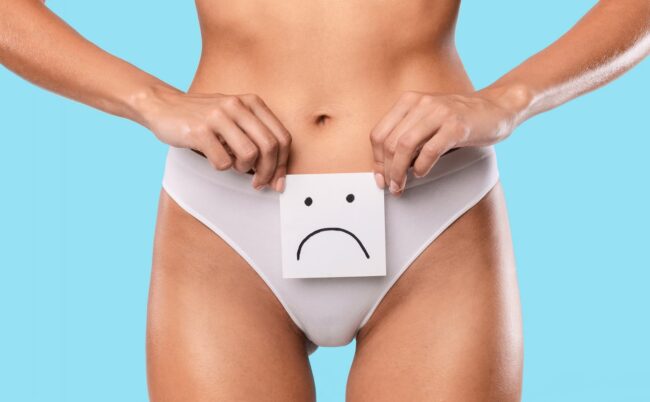Urinary incontinence is a common condition affecting around 30% of women at some point in their lives. It affects us both physically and mentally, because in addition to being unpleasant, it can make us lose self-confidence. Urinary leakage can occur after childbirth, but also at any time in a woman's life such as menopause. How to get out of it?
Perineal rehabilitation to treat urinary leakage
Fortunately, perineal rehabilitation is a effective solution to reduce or even eliminate the effects of this anomaly. Perineal rehabilitation takes care of of the perineum, this set of muscles and ligaments which supports our organs.

A perineal biofeedback probe then comes to help us tone this muscle, in order to strengthen him against the micro-traumas he suffers every day.
We can then ask ourselves what biofeedback is, and how it helps us to regain confidence in ourselves during everyday life? Don't panic, we see everything in this article!
What is biofeedback?
THE biofeedback is based on a technique that uses electronic devices to measure and record physiological activity such as heart rate, muscle tension, skin temperature, brain waves, etc.
In the case of perineal rehabilitation, biofeedback will allow us to measure the tension of the muscles of our perineum, which gives us information about tonicity.
At Fizimed our probe is paired via Bluetooth to a smartphone and a mobile app, which receives all the information, and helps the woman who uses it to do the exercises in visualizing her contractions.

What is the difference between biofeedback and electrostimulation?
Biofeedback and electrostimulation are two techniques that can be used as part of perineal rehabilitation. But they don't have much in common, except using a probe.
The perineal electrostimulation probe
The difference is that an electrostimulation probe sends small electrical pulses. These probes are therefore less chosen because they can generate a feeling of discomfort. And above all, it is a passive muscular work.
This is partly why, according to the scientific literature, the electrostimulation probes are less effective than biofeedback probes.

Furthermore, their use is to avoid in the context of postpartum perineal rehabilitation because the application of an electric current to an injured area can induce a delay in nerve regeneration.
The perineal biofeedback probe
A perineal probe biofeedback is an analytical probe. She analyzes muscle activity around it, then renders the data in the form of a visual signal (like on a mobile application).
Here, the probe only acts like a sensor. It does not send electric current and does not emit vibration.

This technology therefore requires a active muscle work on the part of the patient who must carry out voluntary perineal contractions.
Why use a perineal biofeedback probe?
A perineal biofeedback probe is very useful, throughout our lives. It allows us as women to strengthen our perineum, and to keep toned at any age!
Because contrary to popular belief, urinary leakage can appear at any time of life : after childbirth, when returning to sport, during exercise, at menopause…
The perineal probe during perineal rehabilitation
A probe is also very useful during perineal rehabilitation, as it helps us throughout the healing process to become aware of our pelvic muscles, and whether our muscles are healthy or not.
And above all, the fun aspect of the mini-games and the monitoring of progress will help to stay motivated in the long term.

Is re-educating your perineum possible at any age?
In short: Yes ! Taking care of your perineum at any age is even highly recommended!
As life progresses, and especially in our daily life, our female perineum will undergo multiple traumas, and it is therefore necessary to be able to re-educate and strengthen him continuously, and not just after giving birth as we often hear.
Can Kegel exercises help with perineal rehabilitation?
THE Kegel exercises can be of great help, as they are simple and can be done in total autonomy at home, at home.
Coupled with the use of a perineal probe, Kegel exercises can help you to quickly improve the state of health of your perineum.

The perineum: the source of your problems
What is the role of the perineum in urinary incontinence?
The perineum is the set of muscles that supports our intimate organs. It also plays a crucial role in the urinary sphincter support. When the perineum is contracted, it helps to properly close the urethra and anus.
The pelvic floor therefore plays an important role in urinary incontinence, because if its tone is not sufficient, it can cause or worsen the symptoms of urinary incontinence.
When do we talk about urinary incontinence?
Generally, we will talk about urinary incontinence for women who present with involuntary urinary leakage before or after giving birth. They then need a perineal rehabilitation.

This problem is relatively common. Approximately 30% of women report a form of urinary incontinence in the 3 months following their delivery. But all women can be affected by urinary incontinence, and at any age, not just during or following pregnancy!
I have urinary leakage after my pregnancy, how can I stop it?
THE urinary leakage can occur immediately after giving birth or develop in the weeks or months that follow. In the majority of cases of incontinence, the perineal rehabilitation is the treatment that can help stop this symptom of urinary loss.
For many women, incontinence is temporary and improves in the months following delivery when taken care of correctly. However, some women may still continue to have long-term symptoms if they don't take enough care of their perineum.
Can we regain normal urinary functions quickly?
With the use of a perineal biofeedback probe, we can regain our normal urinary functions quite quickly, with several sessions of at least 10 minutes per week.
For example, you can start by testing the special urinary leakage program, available for free in the Emy application. It will allow you to perform 5 sessions of 10 minutes of exercise per week and set reminders so you don't forget to workout.
Perineal rehabilitation at home with the Emy probe
Perform its perineal rehabilitation at home is the right solution for women who cannot or do not want to call on a health professional. Once the perineal contraction is mastered, it is possible to train independently.
The Emy perineal probe is ideal for women who want carry out their perineal rehabilitation at home. Using a perineal probe at a sustained frequency can help restore a toned perineum.

Learn more about the Emy probe
Can urinary leakage be linked to prolapse?
Yes, urinary leakage can be linked to prolapse. A prolapse, more commonly called organ descent, is a downward displacement of intimate organs.
A prolapse can distort the anatomy of the pelvic floor and affect the support and function of the bladder and urethra. This can then compromise the bladder's ability to hold urine, especially when abdominal pressure increases.
Organ descent is a common complication after childbirth. It is also estimated that approximately 30 to 50% of women who have given birth have some degree of prolapse, although not all cases are not symptomatic.

What are the symptoms of a prolapse?
Many women may have a mild prolapse without symptoms. For those who have them, the symptoms that can leave suspect prolapse are:
- a feeling of heaviness;
- pain in the lower abdomen;
- urination problems (such as increased frequency or intensity of urination)...
Only a healthcare professional can make a diagnosis with certainty.
FAQ – Urinary incontinence and intimate life
Can urinary leakage be caused by a psychological condition?
Although urinary leakage can have a variety of causes, it is important to note that it is usually not directly caused by a psychological condition.
Certain psychological factors (such as strong emotions, anxiety, depression, etc.) can influence or exacerbate urinary problems.

How do I talk to my partner about my incontinence problems?
It is important to have a open and honest communication with your partner. Explain how you feel and how it affects your daily life and your privacy. Together you can seek solutions and support.
What are the preventive measures to avoid urinary incontinence?
To prevent urinary incontinence, it is recommended to regularly practice pelvic floor strengthening exercises, maintain a healthy weight, and avoid excessive efforts which can weaken the pelvic muscles.




